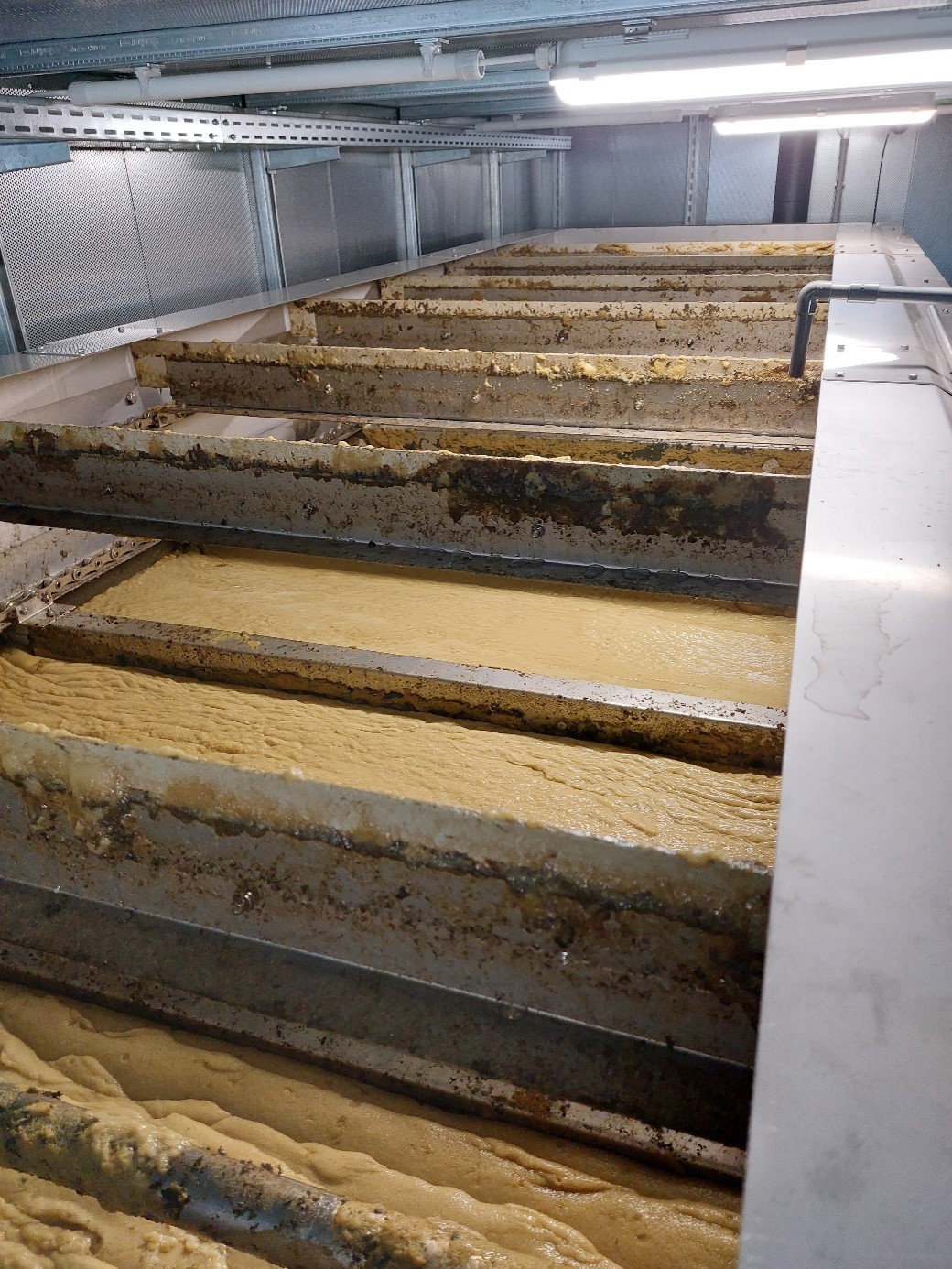A scraper is a mechanical device used in water and wastewater technology to remove settled solids (sludge) or floating materials (suspended solids) from settling or sedimentation tanks. Scrapers play a central role in sewage treatment plants and water treatment plants, as they improve the efficiency of solids removal, increase process stability and relieve the downstream treatment stages.
Table of contents
Basic function and areas of application
Definition of
A scraper is a technical system that has a scraper device to remove sediment from the bottom of a basin or floating matter from the surface. It is mainly used in the following areas:
- Wastewater treatment: In primary clarifiers, secondary clarifiers and other sedimentation systems.
- Water treatment: In clarification and sedimentation tanks for drinking water treatment or process water treatment.
- Industrial wastewater: In sedimentation tanks for the treatment of industrial wastewater with a high solids content.
Purpose
- Sludge removal: Removal of settled sludge from the bottom of the basin to maintain the sedimentation capacity of the basin.
- Floating debris removal: Removal of grease, oil or suspended matter that reaches the water surface.
- Process optimization: Ensuring uniform hydraulic conditions and avoiding deposits.
Types of broaches
1st floor scraper
- Remove settled solids from the bottom of the tank.
- Types:
- Bridge clearer:
- A bridge that stretches across the entire basin moves slowly and pushes the mud towards the mud channel.
- Application: Rectangular basins.
- Circular scraper:
- Scraper rotates along the circular path of a round basin and collects sludge in a central depression.
- Application: Round tanks in sewage treatment plants.
- Bridge clearer:
2. surface scraper
- Remove floating matter from the water surface.
- Types:
- Combined scraper:
- Clearing device for the pool floor and at the same time a scraper for floating materials.
- Pure floating scraper:
- Device that only works on the surface and removes oil or grease, for example.
- Combined scraper:
3. lamella separator scraper
- For tanks with inclined clarifier modules.
- Specially developed to remove the sludge from the narrow spaces between the inclined plates or pipes.

Photo: Surface scraper of our ALMA NeoDAF flotation plant for removing flotation sludge
Structure and components of a broach
A scraper consists of several functional components:
1st broaching device
- Floor scraper:
- Metal or plastic shovels that push the settled sludge towards the sludge channel.
- Surface scraper:
- Devices that guide floating particles to the extraction point.
2. drive system
- Mechanical drive:
- Electric motors that move the broaching device.
- Hydraulic drive:
- Used in special applications where high force is required.
3. support structure
- Bridge or arm that carries the broaching device and enables movement.
- Materials: Corrosion-resistant steel (e.g. stainless steel), aluminum or coated steel.
4. extraction and collection system
- Mud channel:
- Central channel that drains the collected sludge from the basin.
- Floating fabric channel:
- Channel on the surface to remove grease or other floating matter.
5. control and automation
- Sensors:
- Monitor the sludge thickness and control the clearing cycles.
- Automated control:
- Optimizes operation and energy consumption by adjusting the clearing times.
How a broach works
1. sludge removal
- The settled sludge is pushed across the pool floor to the sludge channel by the floor scraper.
- The sludge collects in the channel and is discharged for further treatment (e.g. in digestion towers or sludge presses).
2. floating debris removal
- Surface scrapers guide the floating matter to the floating matter channel.
- Typical floating substances: fats, oils, foam.
3. combination
- Many scrapers are designed as combined systems that remove both sludge at the bottom and floating matter on the surface.
Technical requirements and dimensioning
1. hydraulics and basin geometry
- Scrapers must be adapted to the hydraulics and geometry of the tank to ensure efficient scraping.
- Flow velocity and settling time influence the position and quantity of the settled sludge.
2. material selection
- The components must be resistant to corrosion, abrasion and chemical attack:
- Stainless steel for aggressive media.
- Plastics (e.g. GRP) for lower mechanical loads.
3. drive and energy efficiency
- The drive should be energy-efficient and optimized for operation.
- Frequency converters allow the clearing speed to be controlled as required.
Conclusion
A scraper is a key component in water and wastewater treatment that makes the operation of sedimentation tanks efficient and reliable. By selecting the right type and optimally adapting it to the process requirements, a scraper makes a significant contribution to the efficiency and cost-effectiveness of treatment plants. The combination of modern materials, automation and precise control enables a long service life and low maintenance, making it an indispensable solution in water technology.
For further information on our products, please feel free to contact us at any time!








